Category Food For Thought
Shared on Instagram and archived here, this section highlights some of our favorite – and hopefully insightful – quotes that might inspire you to become a more inclusive communication professional.
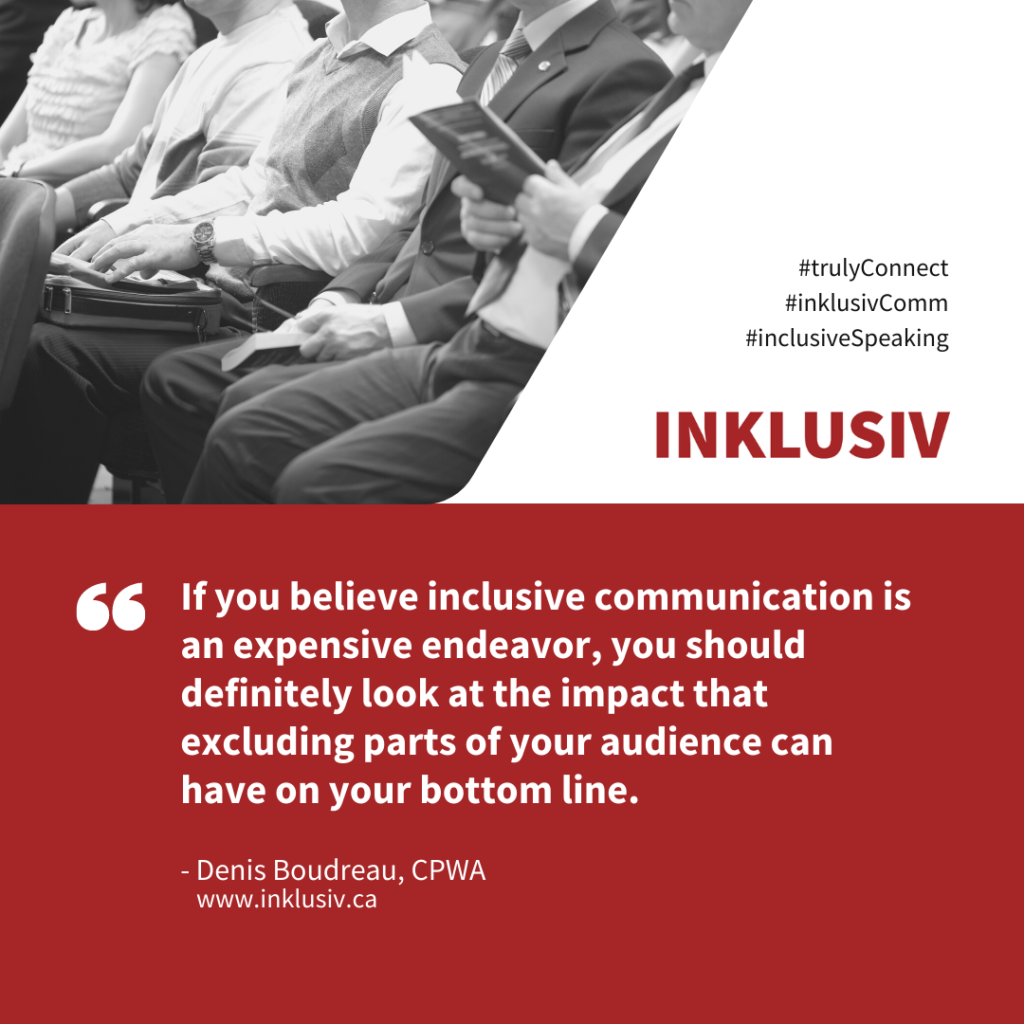

“If you believe inclusive communication is an expensive endeavor, you should definitely look at the impact that excluding parts of your audience can have on your bottom line.”
More details about Food For Thought #037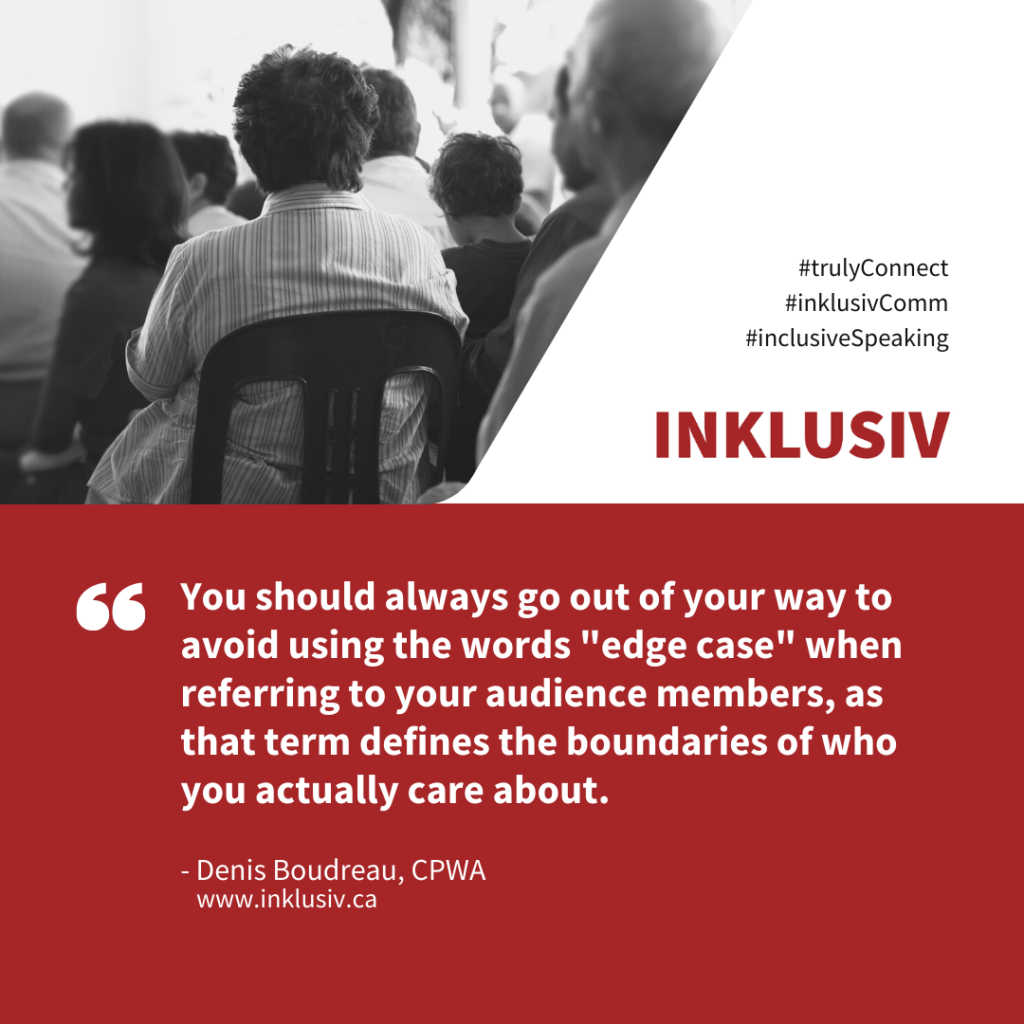

“You should always go out of your way to avoid using the words “edge case” when referring to some of your audience members, as that term defines the boundaries of who you actually care about.”
More details about Food For Thought #036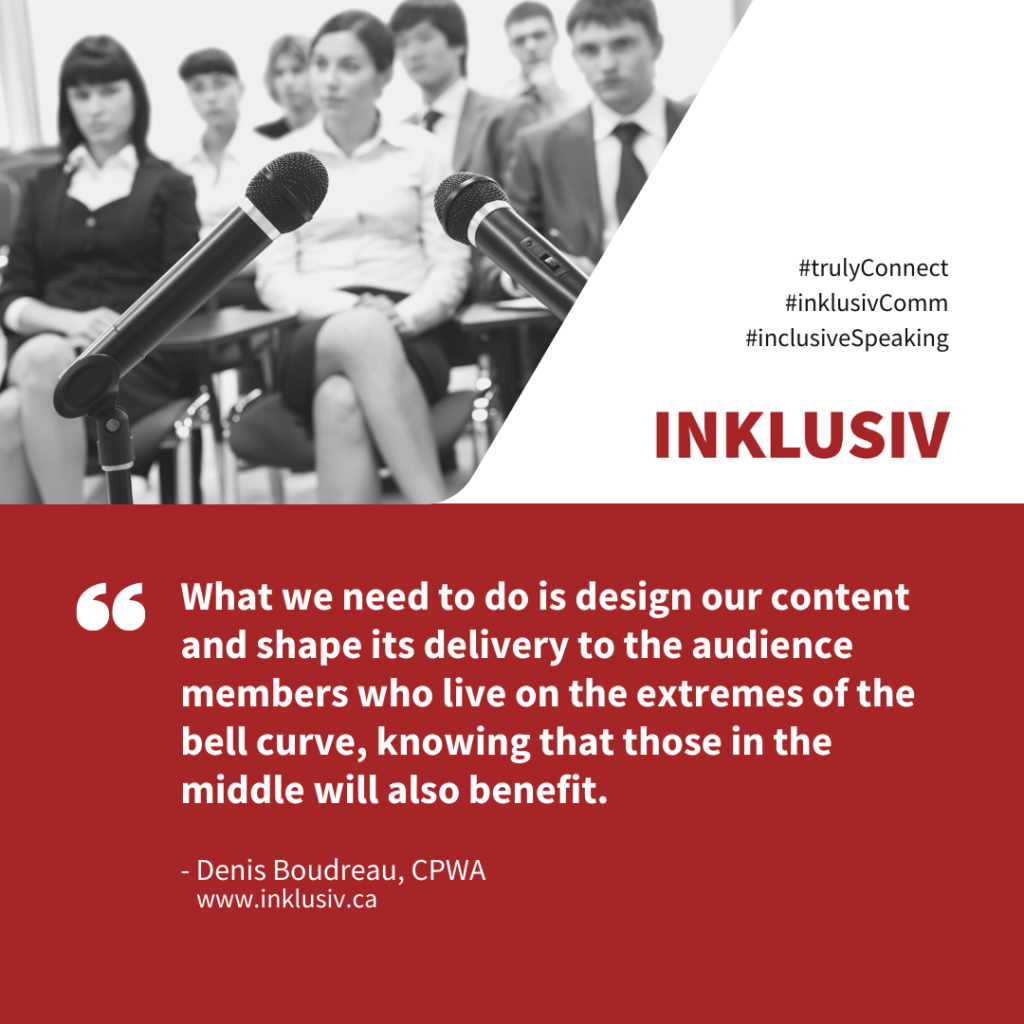

“What we need to do is design our content and shape its delivery to the audience members who live on the extremes of the bell curve, knowing that those in the middle will also benefit.”
More details about Food For Thought #035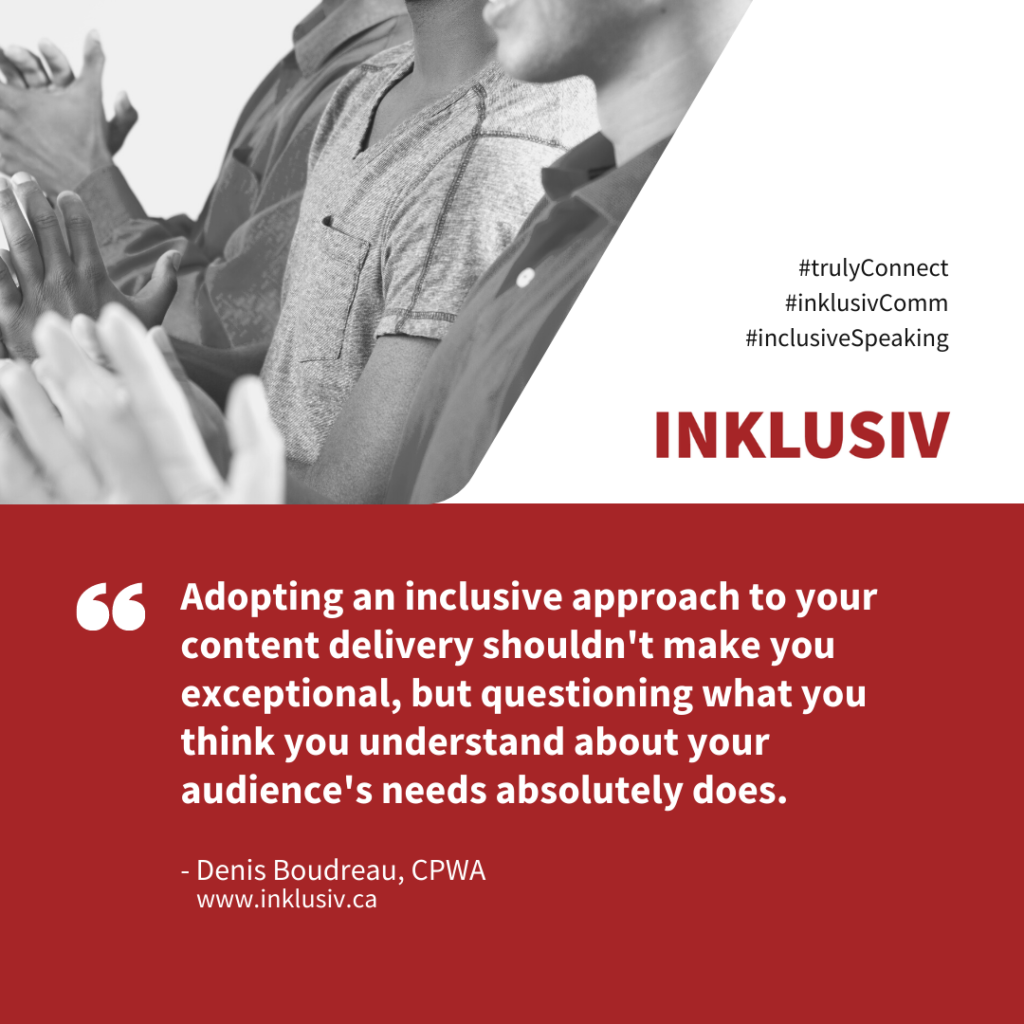

“Adopting an inclusive approach to your content delivery shouldn’t make you exceptional, but questioning what you think you understand about your audience’s needs absolutely does.”
More details about Food For Thought #034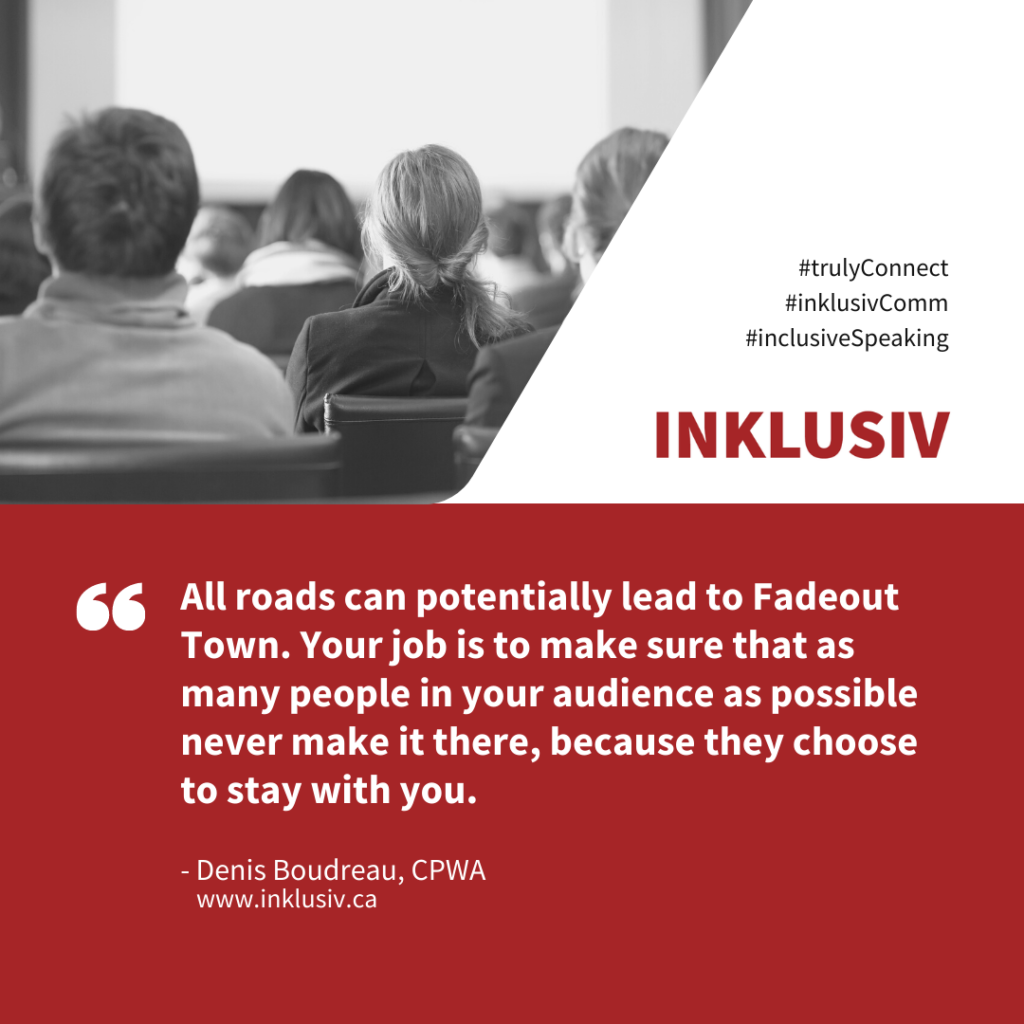

“All roads can potentially lead to Fadeout Town. Your job is to make sure that as many people in your audience as possible never make it there, because they choose to stay with you.”
More details about Food For Thought #033

“It’s in your best interest to recognize that any approach to diversity, equity and inclusion that fails to loop in disability and ageing are inherently flawed and will lead to exclusion.”
More details about Food For Thought #032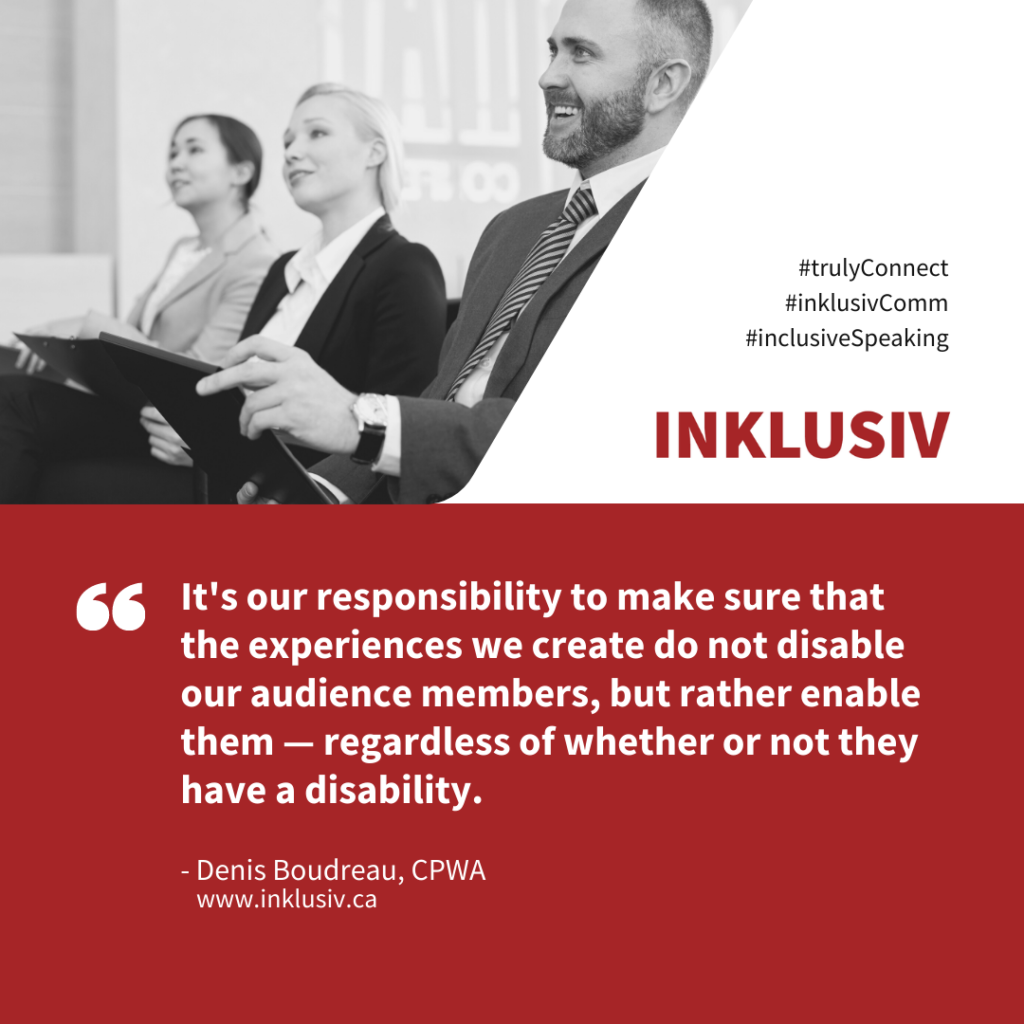

“It’s our responsibility to make sure that the experiences we create do not disable our audience members, but rather enable them — regardless of whether or not they have a disability.”
More details about Food For Thought #031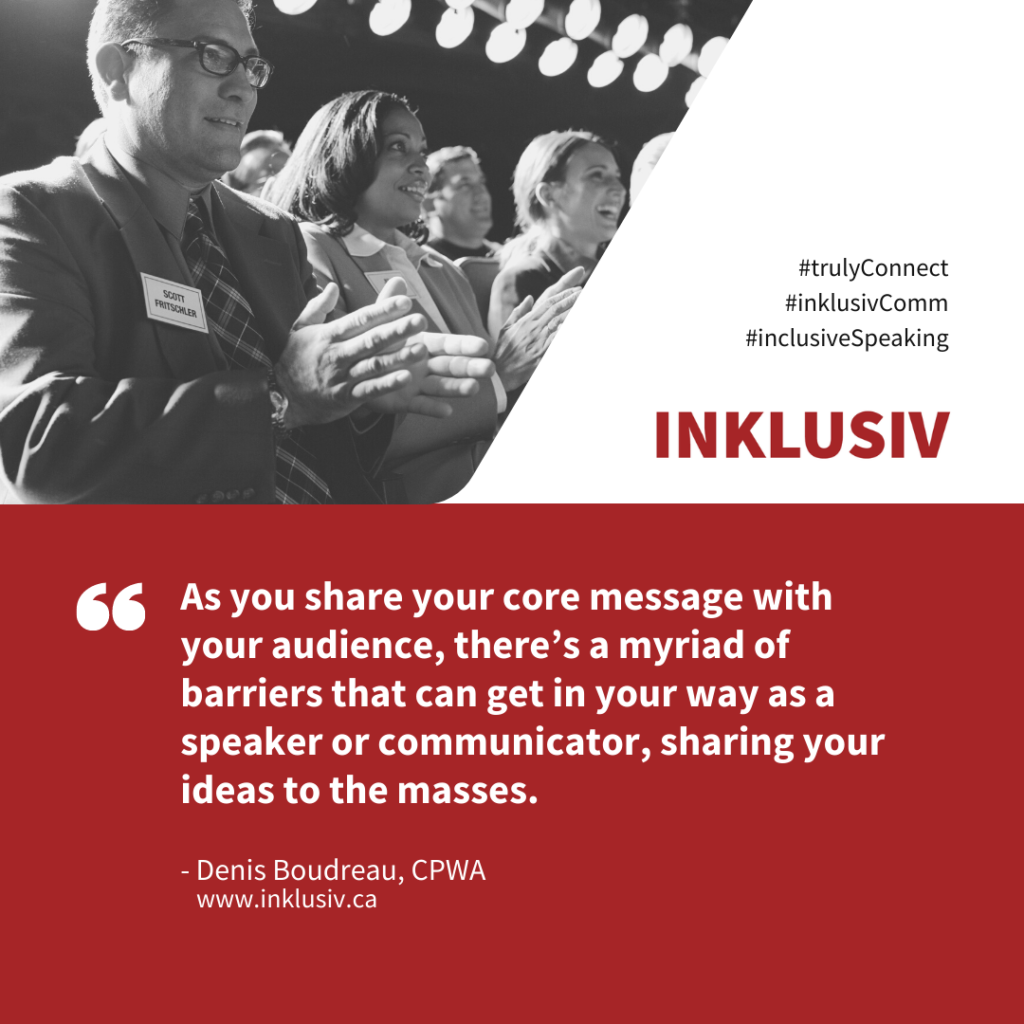

“As you share your core message with your audience, there’s a myriad of barriers that can get in your way as a speaker or communicator, sharing your ideas to the masses.”
More details about Food For Thought #030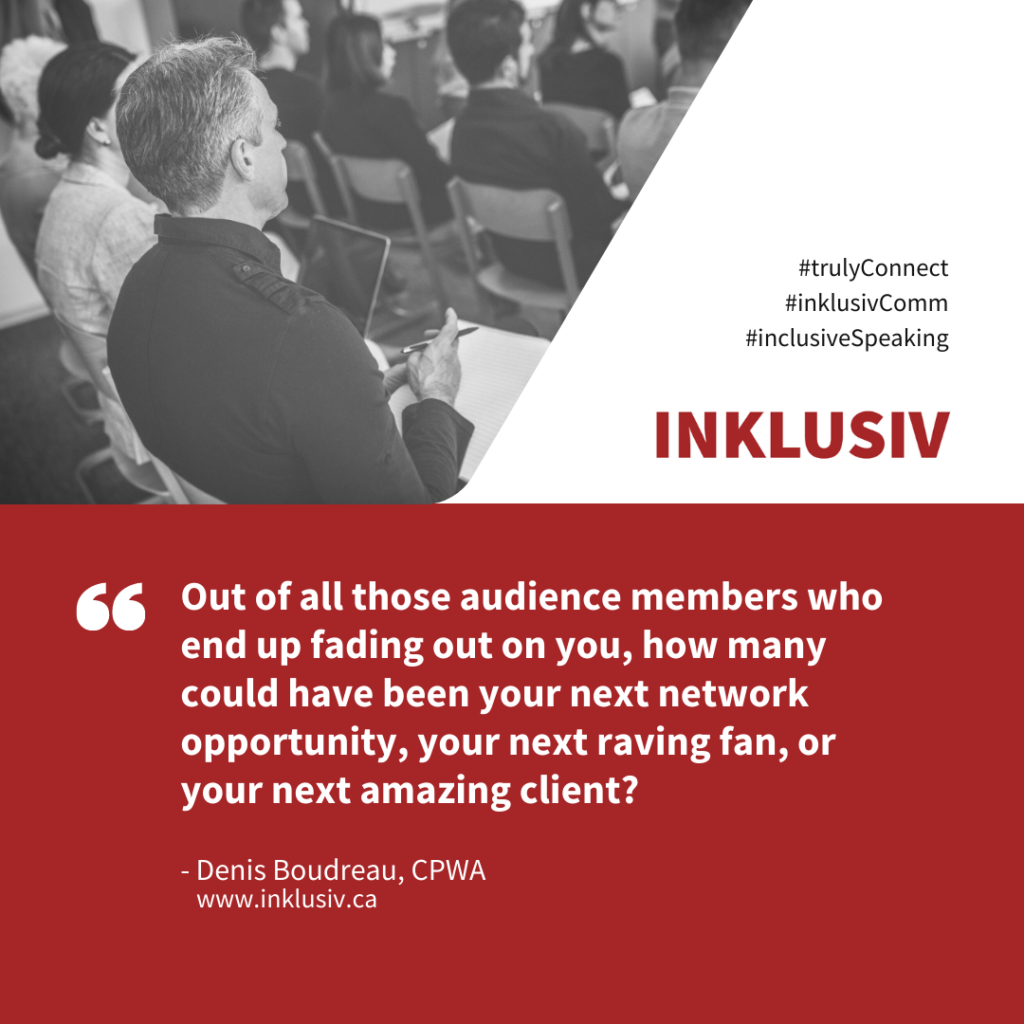

“Out of all those audience members who end up fading out on you, how many could have been your next network opportunity, your next raving fan, or your next amazing client?”
More details about Food For Thought #029

“One of the most common mistakes for communicators is to assume that what they feel works best in terms of content delivery strategies will also work best for everyone else.”
More details about Food For Thought #028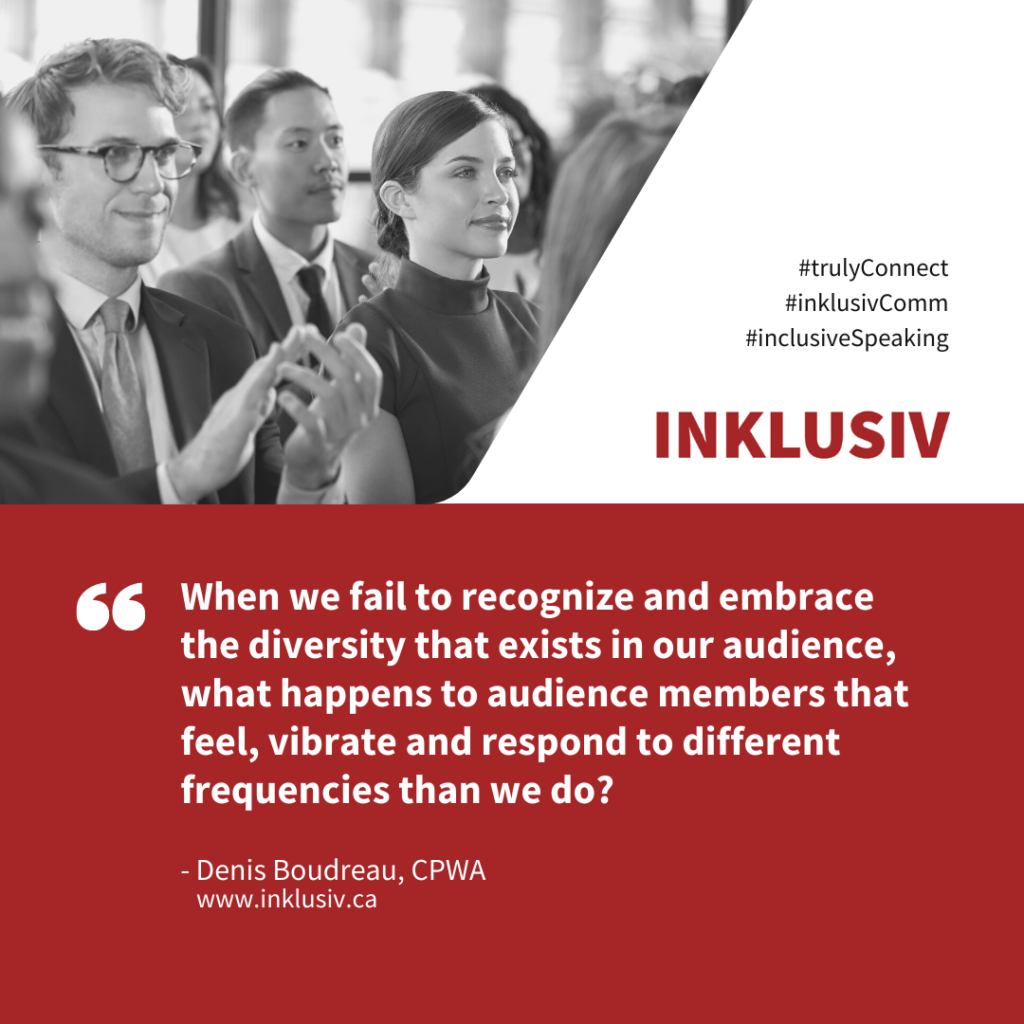

“When we fail to recognize and embrace the diversity that exists in our audience, what happens to audience members that feel, vibrate and respond to different frequencies than we do?”
More details about Food For Thought #027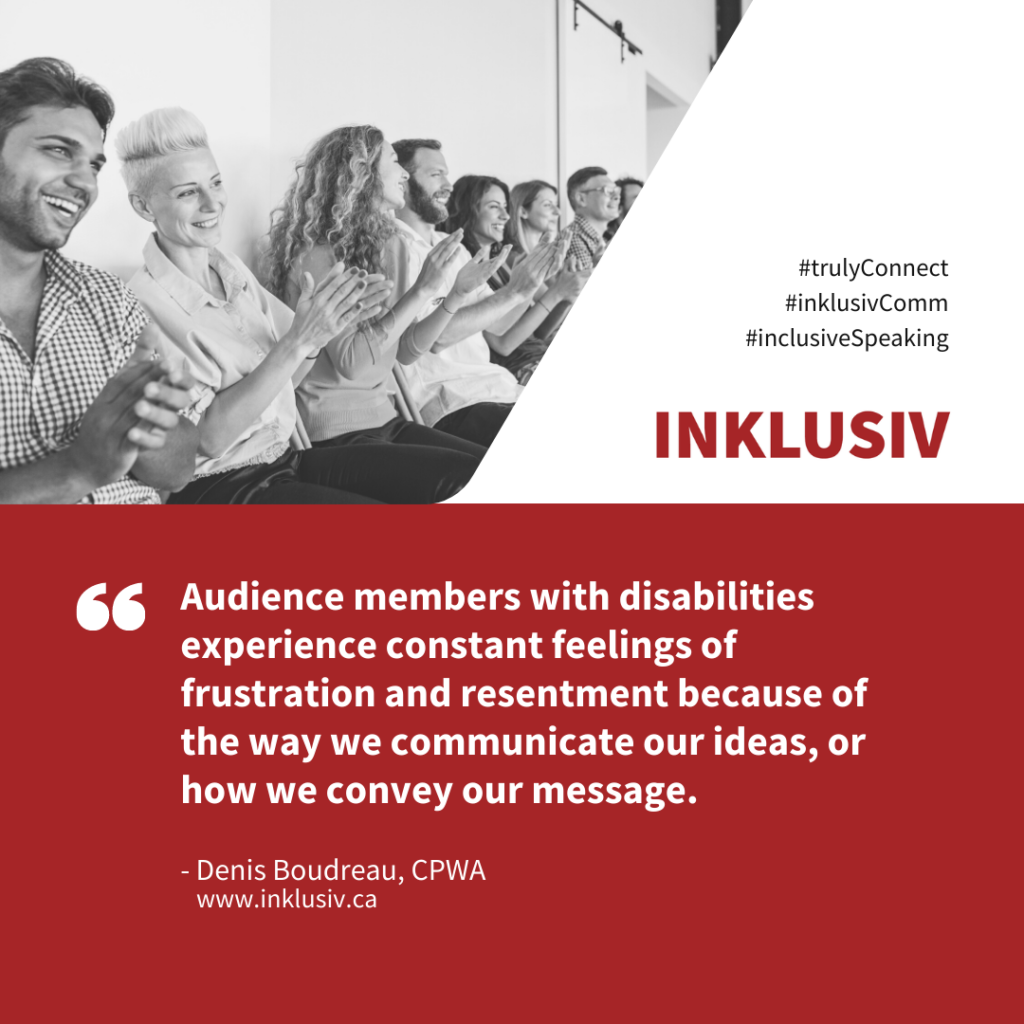

“Audience members with disabilities experience constant feelings of frustration and resentment because of the way we communicate our ideas, or how we convey our message.”
More details about Food For Thought #026

“As communicators, we already know our message can change lives, but most of us aren’t aware of how many more lives we could impact, if only we were more mindful about inclusion.”
More details about Food For Thought #025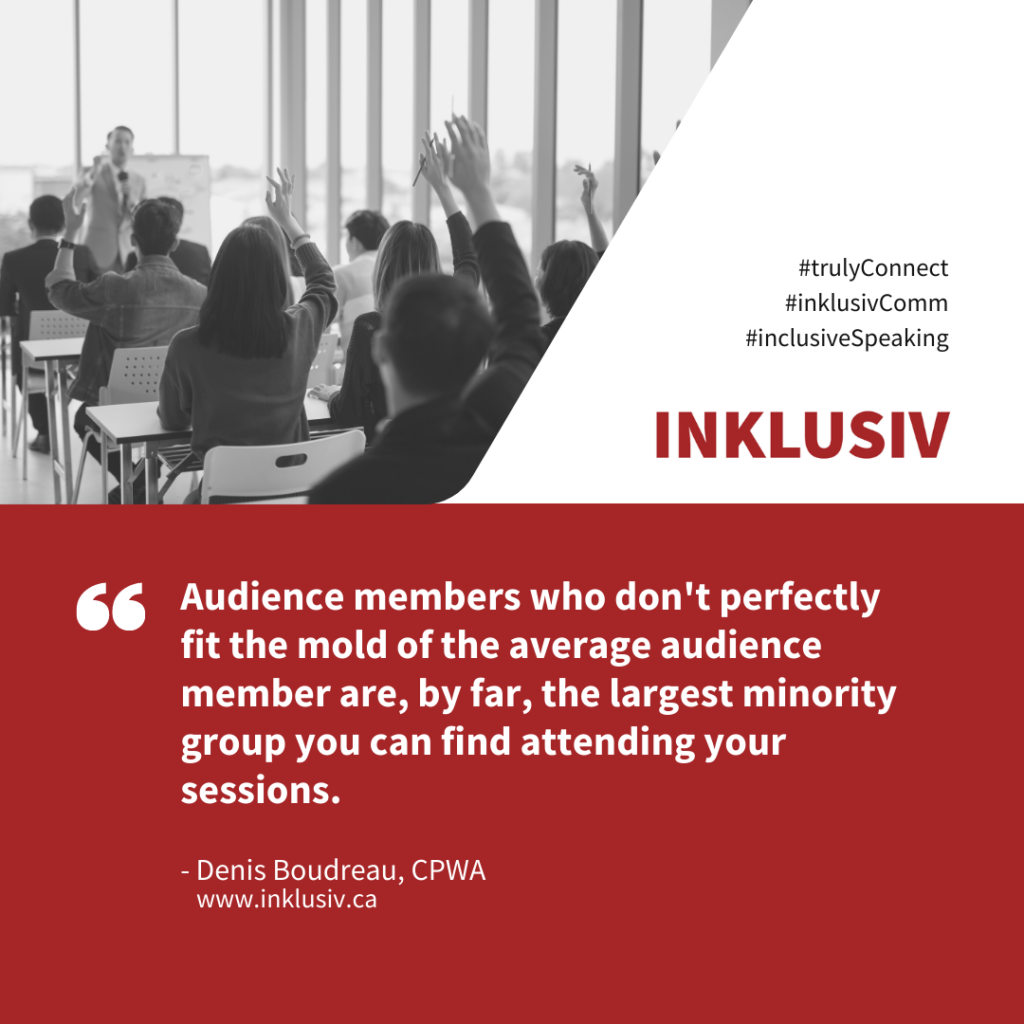

“Audience members who don’t perfectly fit the mold of the average audience member are, by far, the largest minority group you can find attending your sessions.”
More details about Food For Thought #024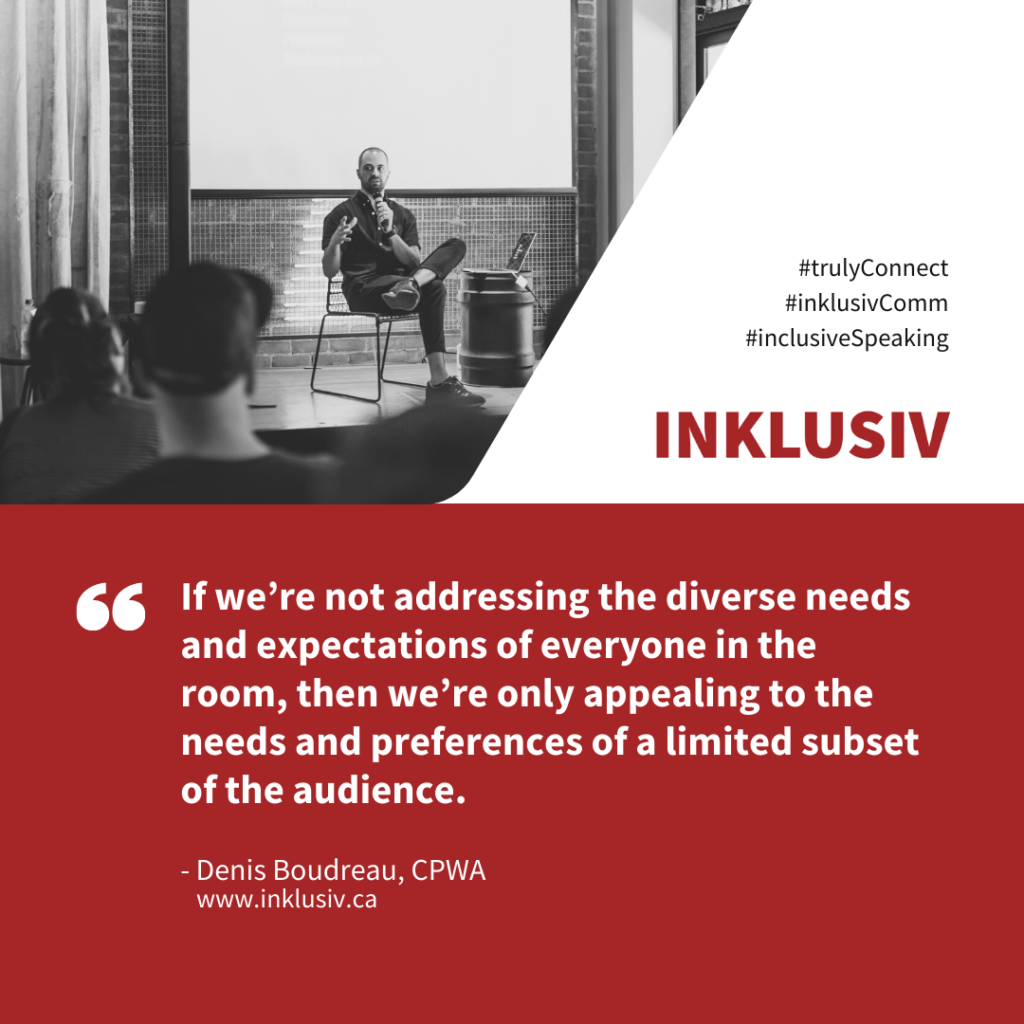

“If we’re not addressing the diverse needs and expectations of everyone in the room, then we’re only appealing to the needs and preferences of a limited subset of the audience.”
More details about Food For Thought #023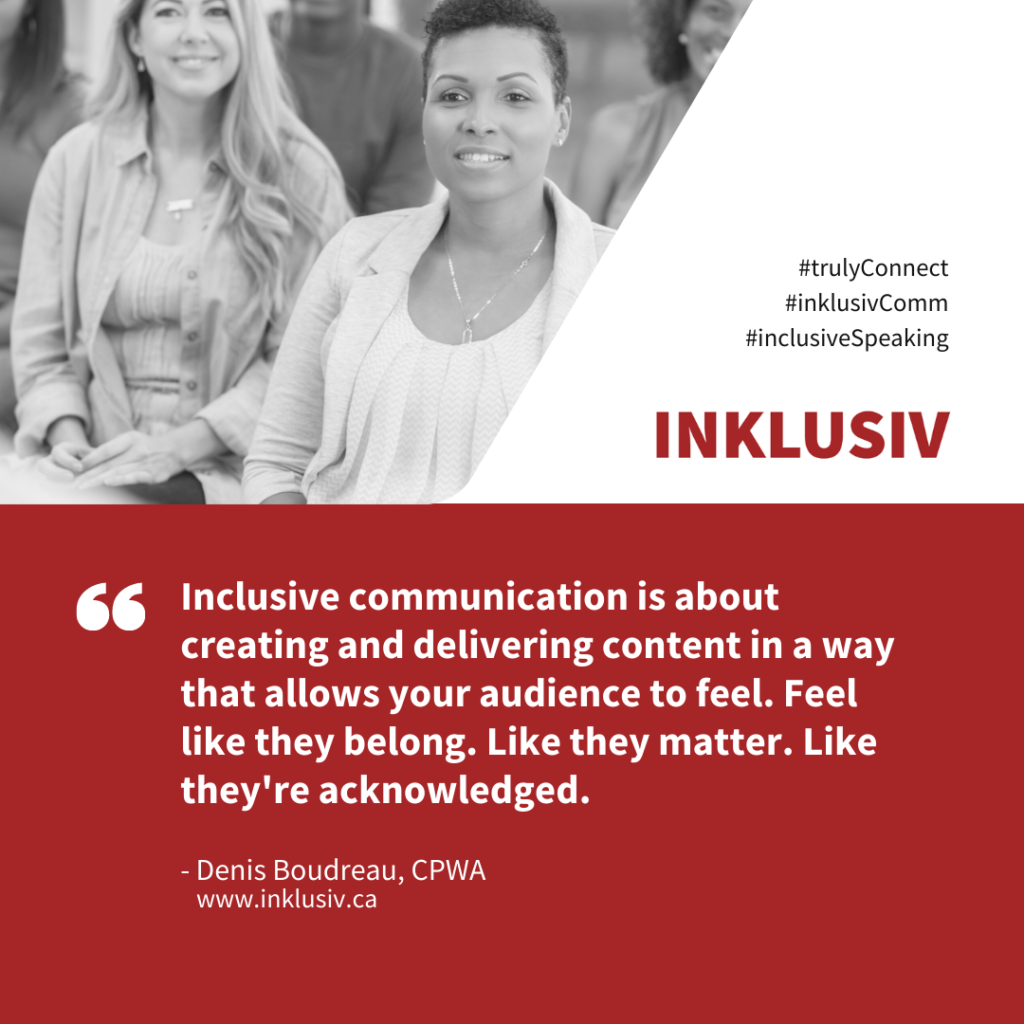

“Inclusive communication is about creating and delivering content in a way that allows your audience to feel. Feel like they belong. Like they matter. Like they’re acknowledged.”
More details about Food For Thought #022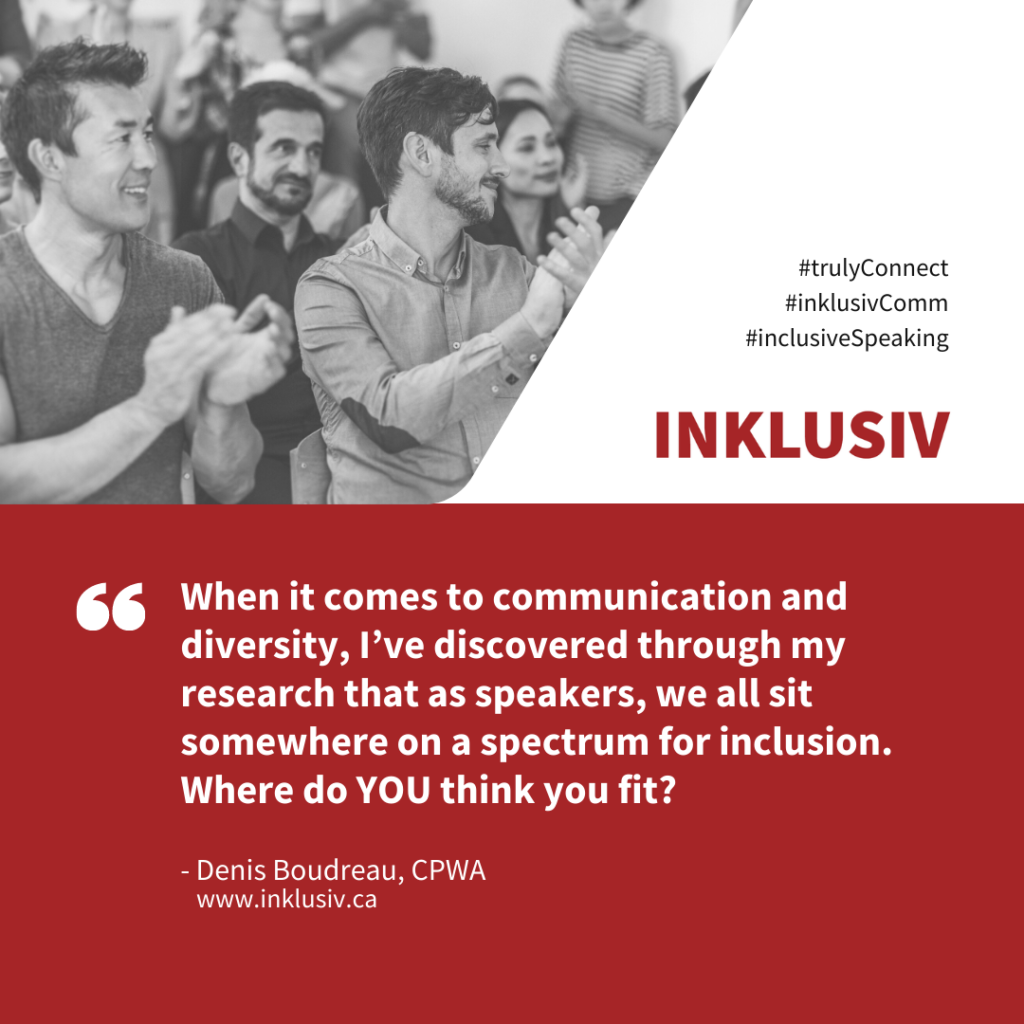

“When it comes to communication and diversity, I’ve discovered through my research that as speakers, we all sit somewhere on a spectrum for inclusion. Where do YOU think you fit?”
More details about Food For Thought #021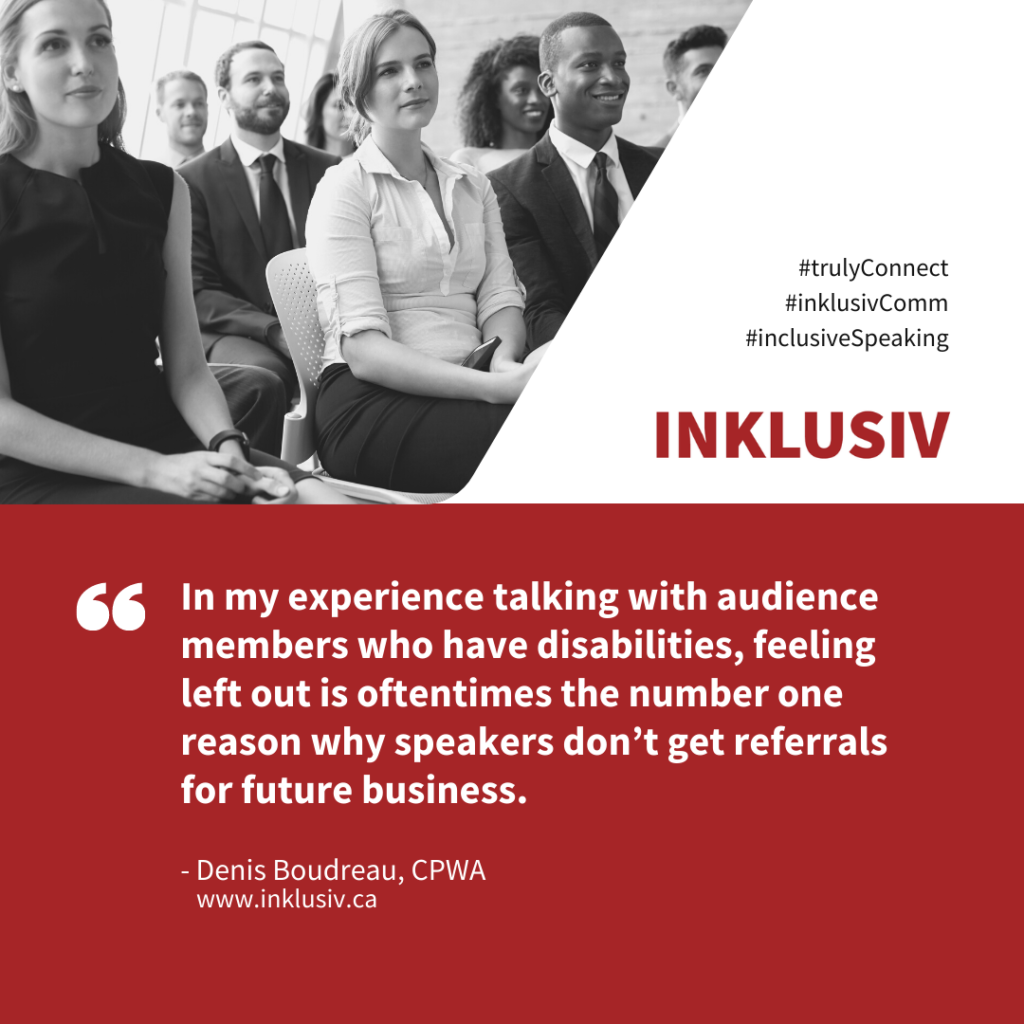

“In my experience talking with audience members who have disabilities, feeling left out is oftentimes the number one reason why speakers don’t get referrals for future business.”
More details about Food For Thought #020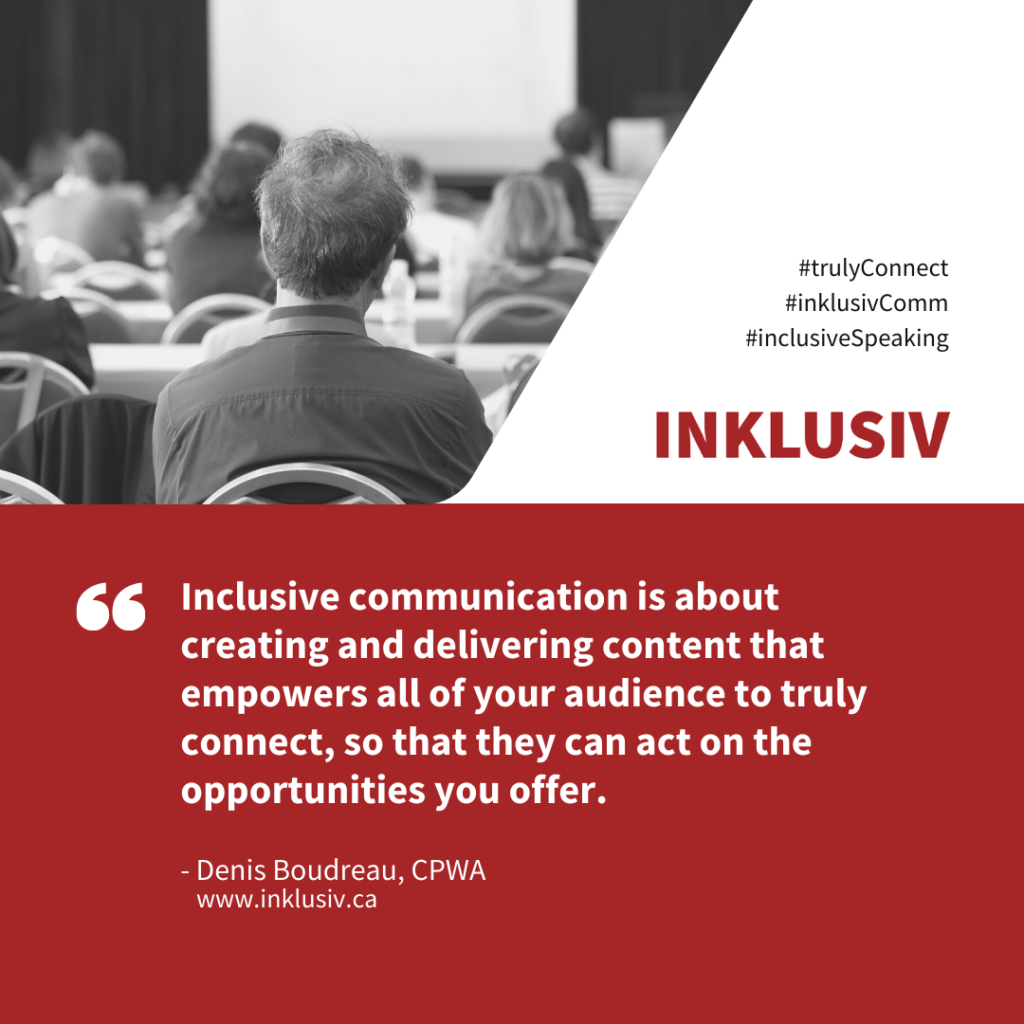

“Inclusive communication is about creating and delivering content that empowers all of your audience to truly connect, so that they can act on the opportunities you offer.”
More details about Food For Thought #019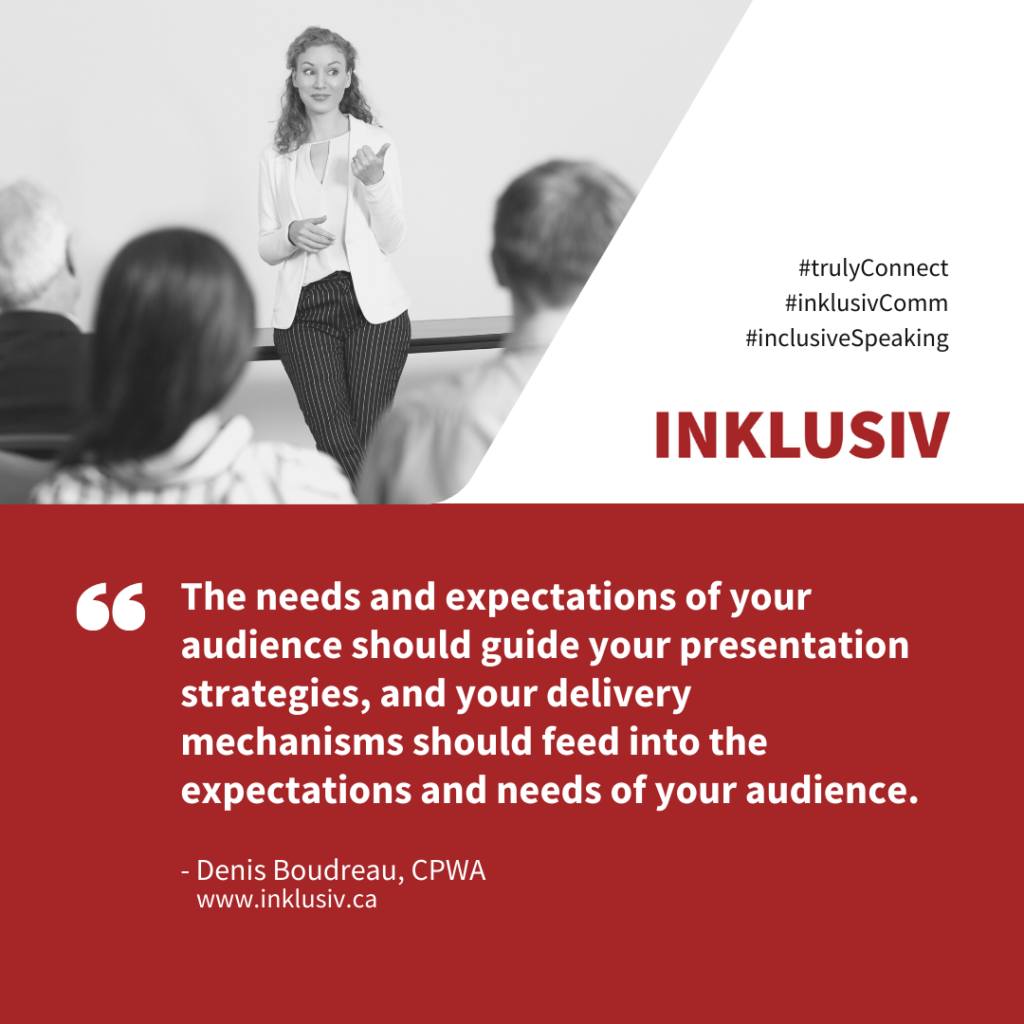

“The needs and expectations of your audience should guide your presentation strategies, and your delivery mechanisms should feed into the expectations and needs of your audience.”
More details about Food For Thought #018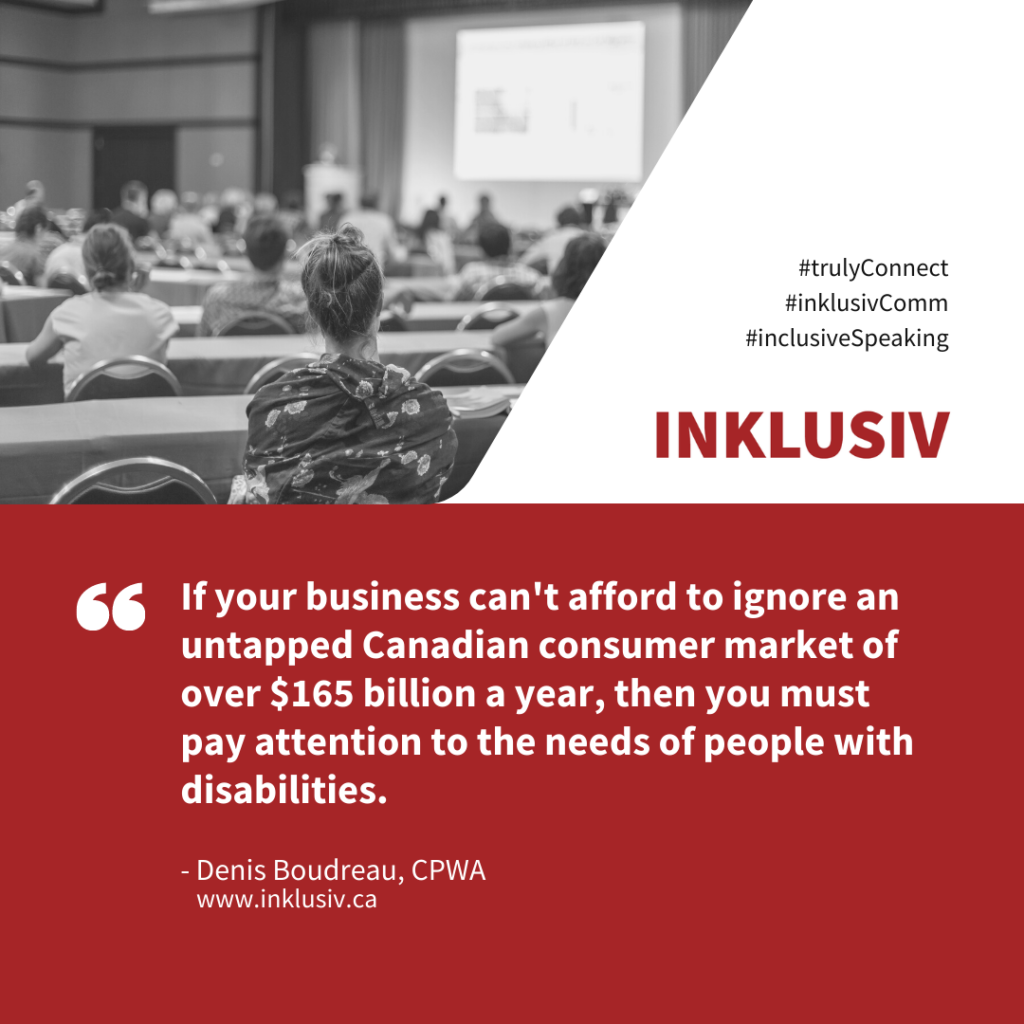

“If your business can’t afford to ignore an untapped Canadian consumer market of over $165 billion a year, then you must pay attention to the needs of people with disabilities.”
More details about Food For Thought #017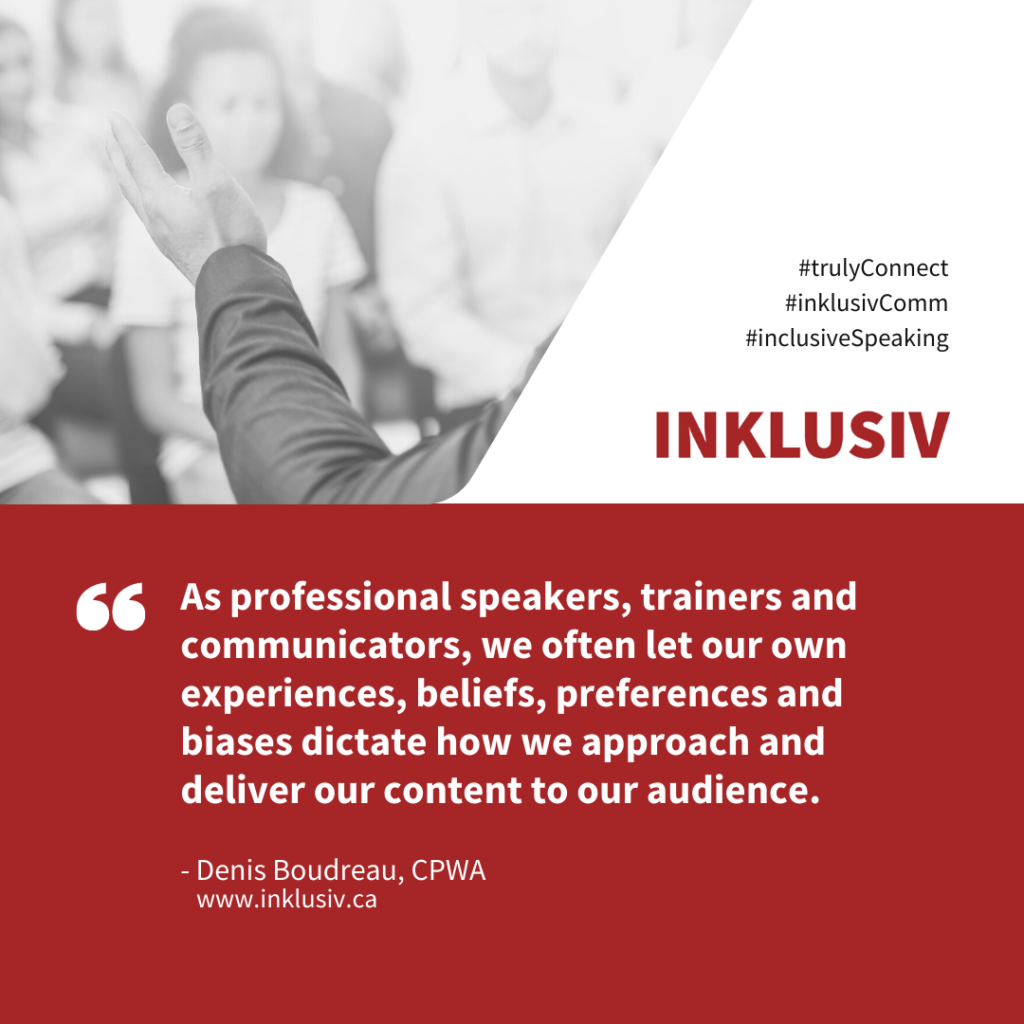

“As professional speakers, trainers and communicators, we often let our own experiences, beliefs, preferences and biases dictate how we approach and deliver our content to our audience.”
More details about Food For Thought #016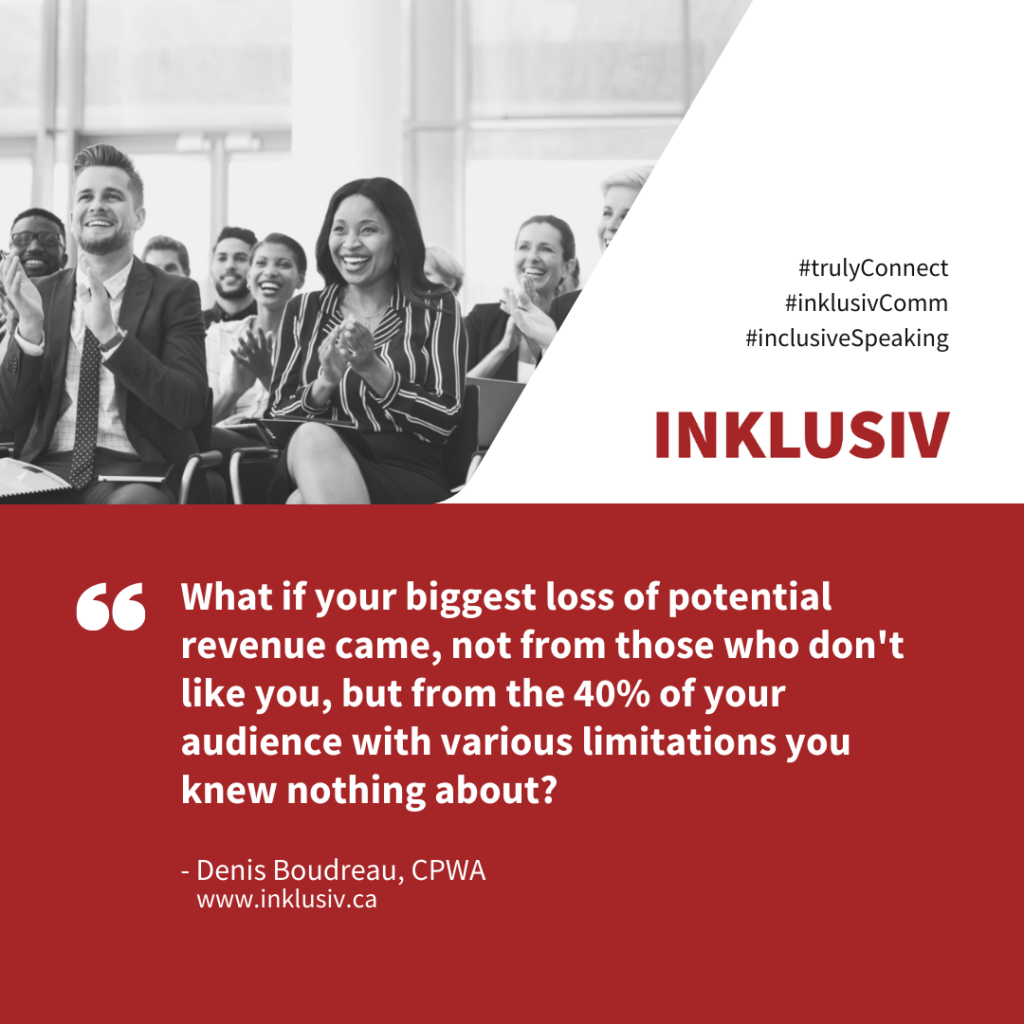

“What if your biggest loss of potential revenue came, not from those who don’t like you, but from the 40% of your audience with various limitations you knew nothing about?”
More details about Food For Thought #015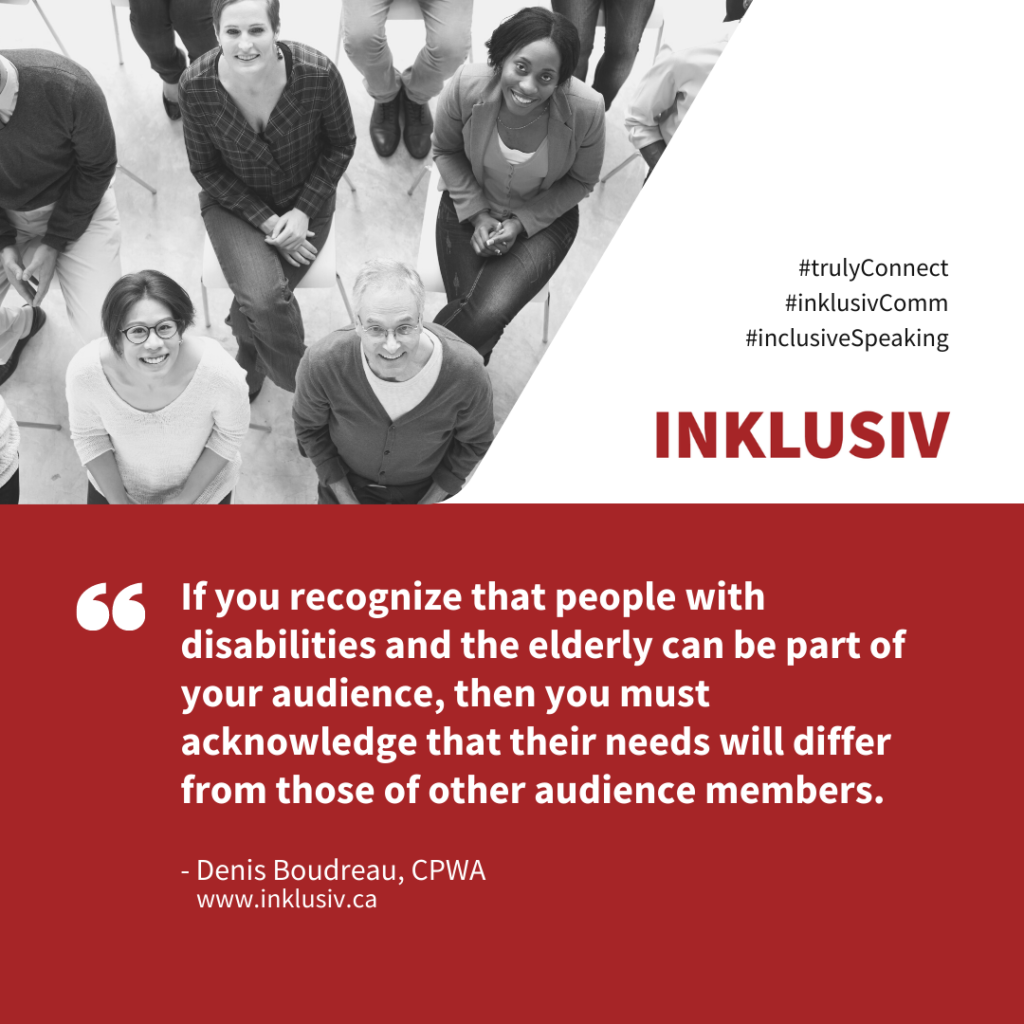

“If you recognize that people with disabilities and the elderly can be part of your audience, then you must acknowledge that their needs will differ from those of other audience members.”
More details about Food For Thought #014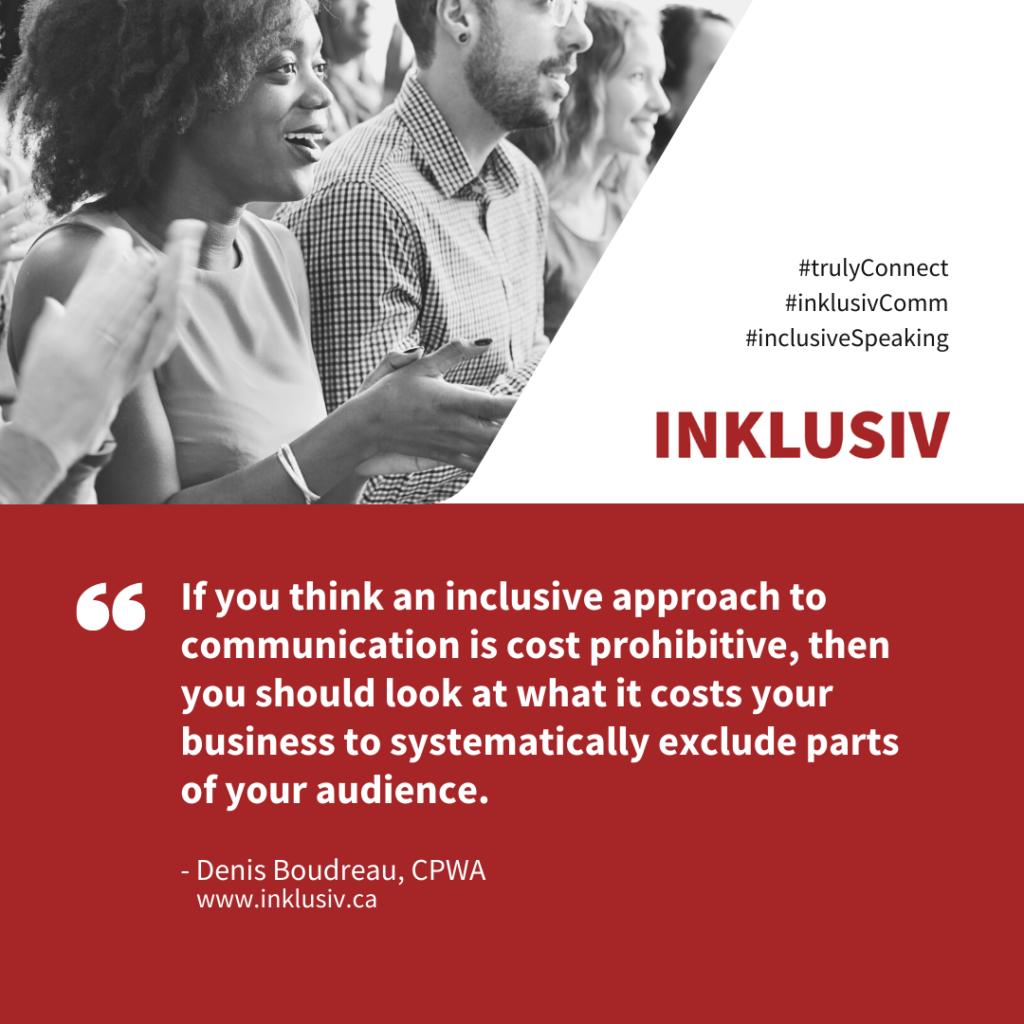

“If you think an inclusive approach to communication is cost prohibitive, then you should look at what it costs your business to systematically exclude parts of your audience.”
More details about Food For Thought #013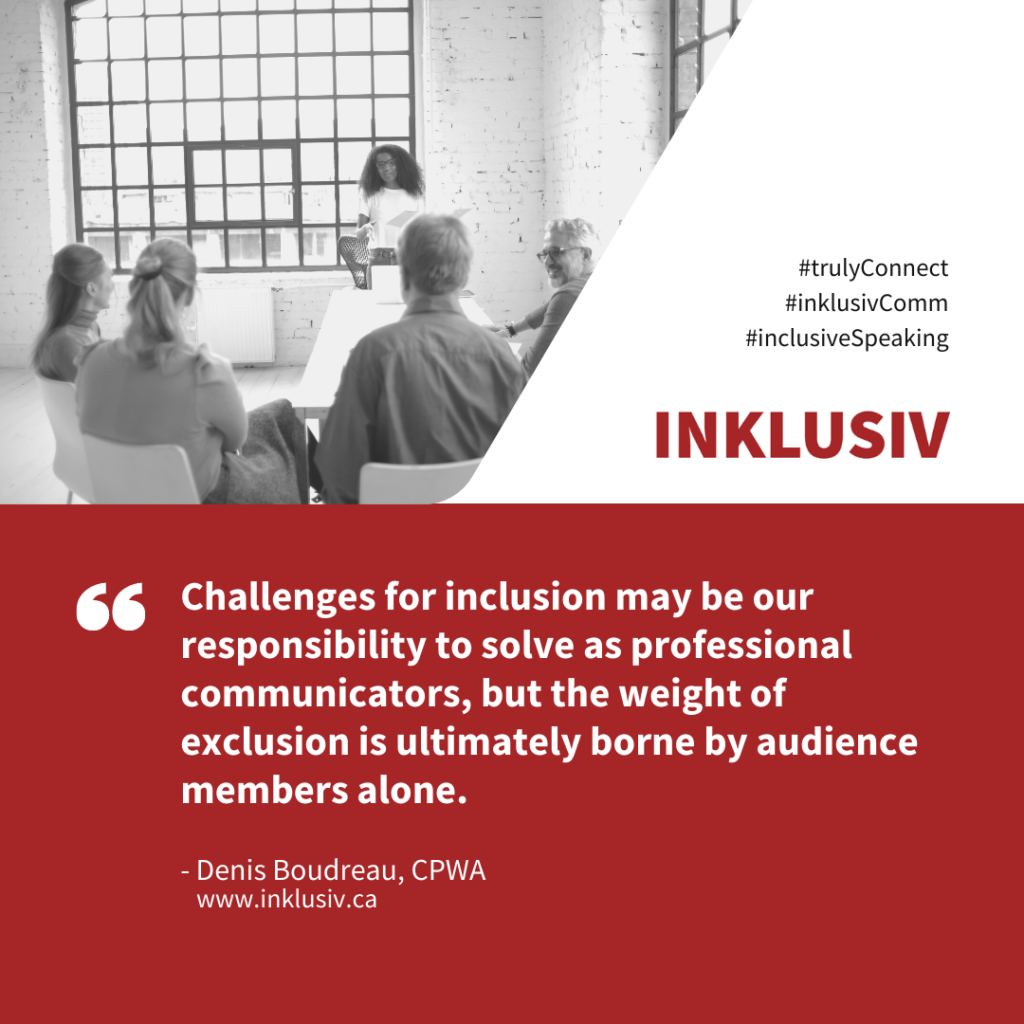

“Challenges for inclusion may be our responsibility to solve as professional communicators, but the weight of exclusion is ultimately borne by audience members alone.”
More details about Food For Thought #012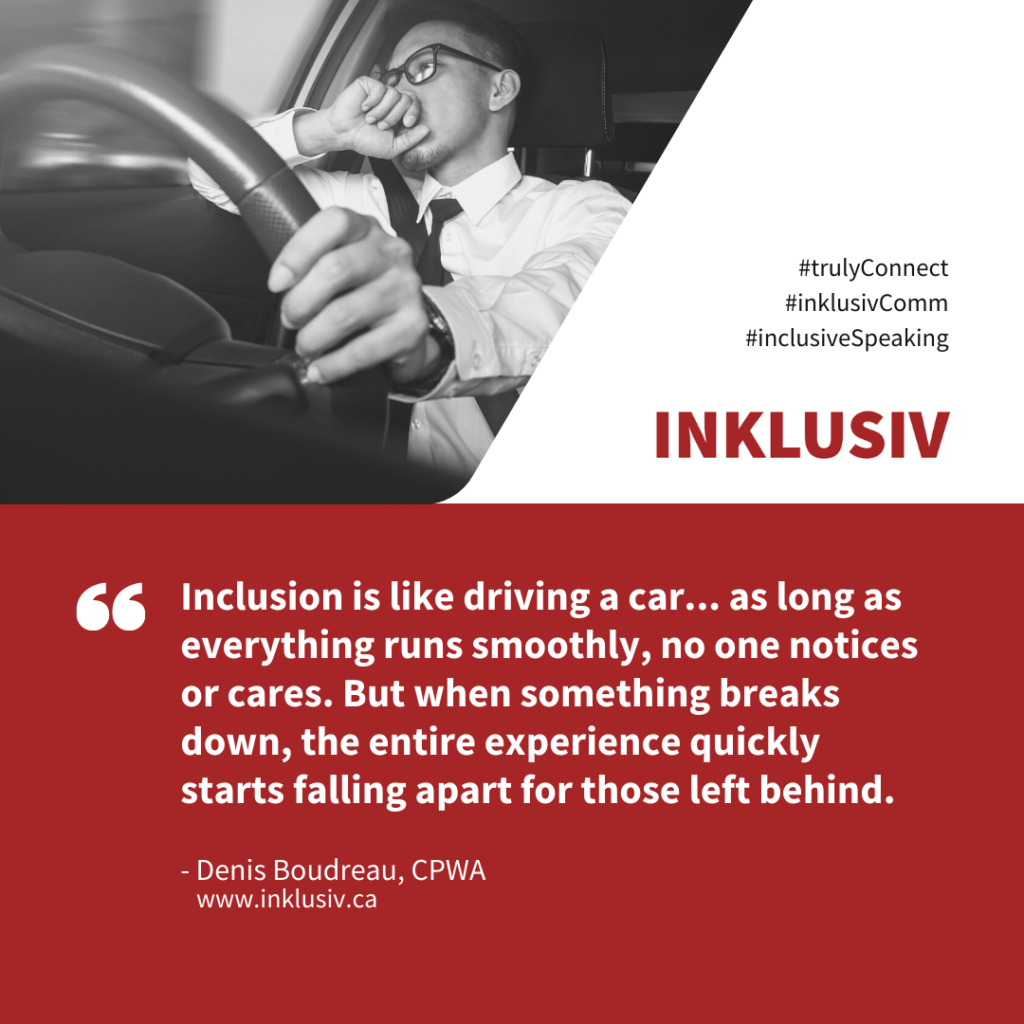

“Inclusion is like driving a car… as long as everything runs smoothly, no one notices or cares. But when something breaks down, the entire experience quickly starts falling apart for those left behind.”
More details about Food For Thought #011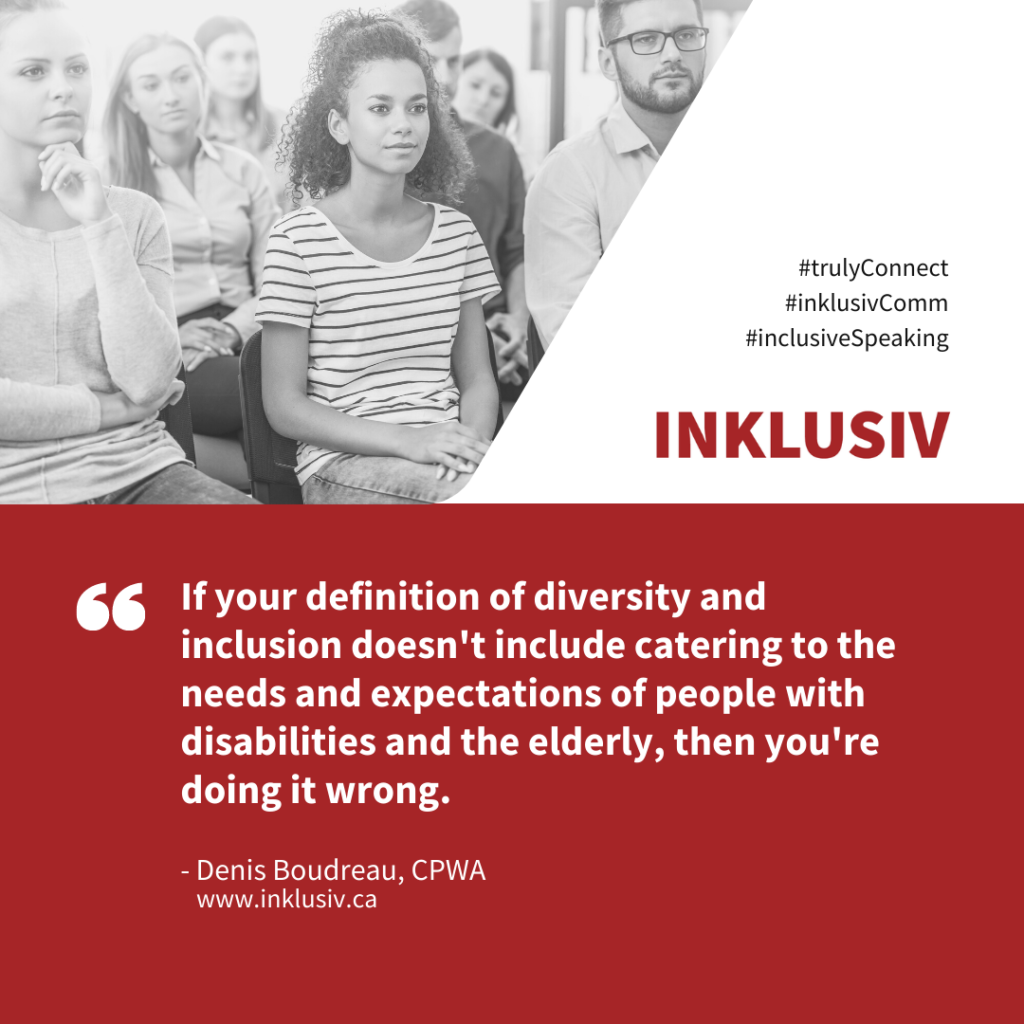

“If your definition of diversity and inclusion doesn’t include catering to the needs and expectations of people with disabilities and the elderly, then you’re doing it wrong.”
More details about Food For Thought #010

“The first step to becoming a truly inclusive communicator is to acknowledge diversity. Every single person needs some differentiation in some way, at some point, for some things.”
More details about Food For Thought #009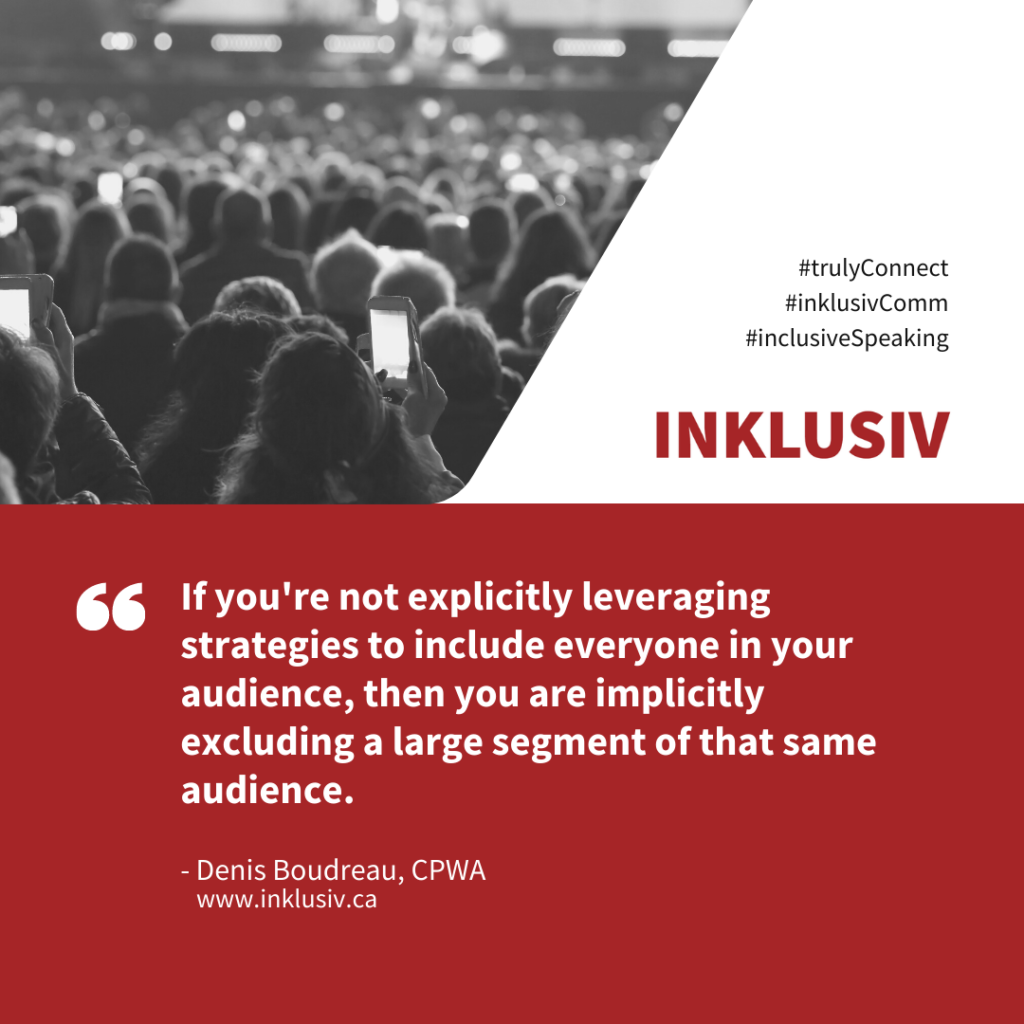

“If you’re not explicitly leveraging strategies to include everyone in your audience, then you are implicitly excluding a large segment of that same audience.”
More details about Food For Thought #008